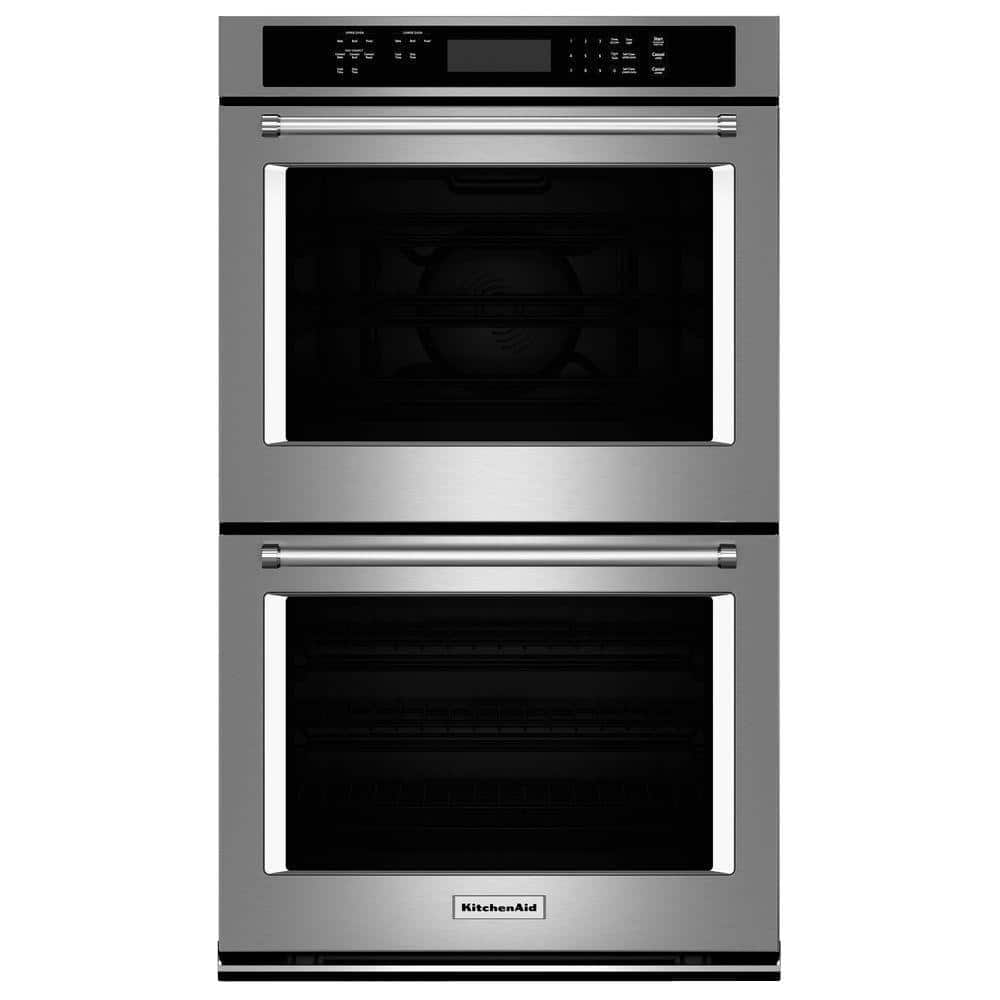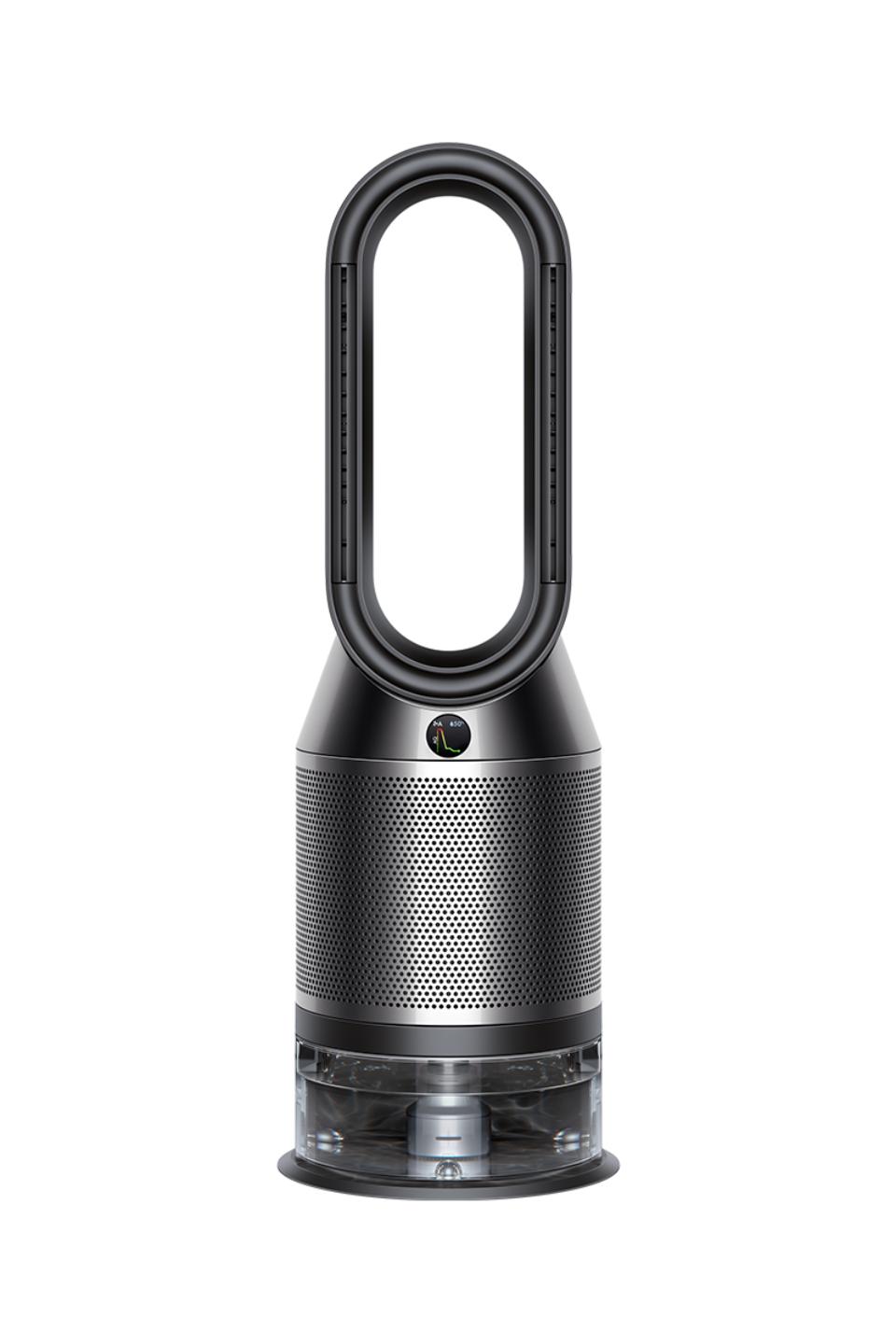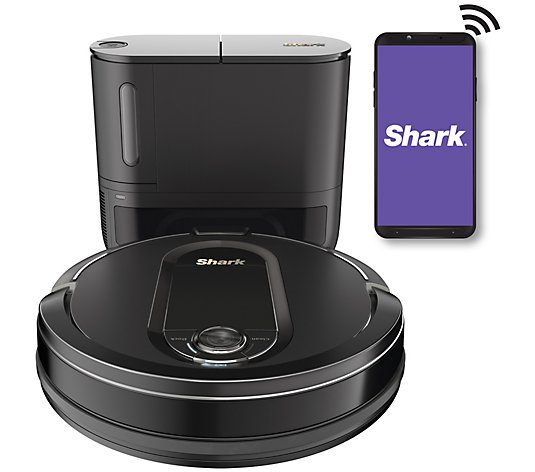KitchenAid 30 in. Double Electric Wall Oven Self-Cleaning with Convection in Stainless Steel
EVEN-HEAT True Convection upper oven helps keep the perfect temp. Temperature probe (upper oven) ensures foods are cooked perfectly.
This 30 in. Double Upper Wall Oven with Even-Heat True Convection provides consistent heating and even cooking. A unique bow-tie shaped design and convection fan helps ensure there are no burnt edges or undercooked centers. The Temperature Probe delivers accurate measurement of internal temperatures of meats, poultry and casseroles without opening the oven. Bold design details are the perfect balance of elegance and functionality.
- 5.0 cu. ft. per oven, provides an extra-large cooking capacity that’s unsurpassed among 30 in. wall ovens and is perfect for large turkeys and roasts. It can even make multiple dishes at once
- Glass-Touch display with control lock function features a responsive, easy-to-use interface that is also easy to clean
- Hidden bake element is positioned below the oven floor, creating a smooth oven surface so spills are easy to clean without maneuvering around heating coils
- Even-Heat True Convection (upper oven) provides consistent heating and even cooking on all racks with a unique bow-tie shaped design and convection fan that helps ensure the most even baking
- Even-Heat Preheat feature helps remove cold spots to help ensure even baking because the entire oven, including the walls and racks, are heated to the correct temperature
- Control Lock function helps to prevent unintended oven changes
- Self-cleaning cycle uses high temperature to power through soils in the oven cavity, requiring only a quick wipe down at the end of the cycle
- Large oven windows makes it easy to check on cooking food without opening the oven door
- Halogen oven lights provide bright illumination, allowing you to easily see the progress of your food
- SatinGlide Roll-Out Extension Rack (upper oven) allows easy loading and features an easy-grip handle, giving you the confidence when cooking with large or heavy dishes
- EasyConvect Conversion System takes the guesswork out of convection cooking while the temperature probe (upper oven) allows accurate measurement of internal temperature of meats, poultry, and casseroles without having to open the oven door
- 1 Year Limited Warranty
- Please call your local store with your Order # to schedule installation for this item
Additional information
| Cut-Out Front to Back Depth (in.) | 24 |
|---|---|
| Cut-Out Height (in.) | 50.25 |
| Cut-Out Left to Right Width (in.) | 28.5 |
| Depth With Door(s) Open 90 Degrees (In.) | 46.75 |
| Lower Oven Interior Depth x Height x Width (in) | 19 x 18 x 25 |
| Product Depth x Height x Width (in) | 23.25 x 51.25 x 30 |
| Upper Oven Interior Depth x Height x Width (in) | 19 x 18 x 25 |
| Wall Oven Size (in) | 30 |
| Certifications and Listings | UL Listed,cUL Listed |






by Monica
Ordered and installed the double oven in our newly build custom home. Since using this oven and the other kitchenaid products has made life simpler. Easy to read controls and easy clean up. Order one if you are thinking about.
by Mary
Not only is this double oven a beauty, it works like a charm. We’re so excited!!!!
by Faye
I have had my KitchenAid for about a month and I love it! I have used it several times and it is perfect for my needs. Patience paid off!
by Chilly
bought it a month ago with 3 other kitchen aid appliances and so far so good! I love the ease and quickness the convection oven provides.
by Bynum
I was so excited about buying my Kitchen Aid oven-and I do like it very much….however-after using aluminum foil in the bottom of my previous ovens (in the past 50 years) to catch drips–it NEVER occurred to me that there was an oven that would be RUINED by using a piece of foil!!!! It melted and stuck to the bottom of the oven and will not come off!! It does mention that in the lengthy manual….but there should be a LARGE WARNING label on the new oven door!!! When I looked online-I realized that there were MANY others that had had the same terrible experience! The price of one paper warning would help save ruining an expensive new oven!!! (this photo is after trying to clean- probably 20 times)
by Carlo
works well with others !! love the handles – a compliment to pour other KA appliances
by Bumpa
We’ve only had ours for a few weeks, but it is the best oven we’ve ever had! Great “looks”, beautiful interior, good illumination, large, clear digital display and controls, and best of all – it cooks evenly and efficiently!
by Suz
Love the eye level of top oven. Oven tells me it’s ready/up to temp but is not. It takes forever to reach the desired temp after the over says it is.
by Hunnie
I bought this oven when I remodeled my kitchen. I absolutely love it!!! It is user friendly as well as helpful for me with being at a more convenient height.